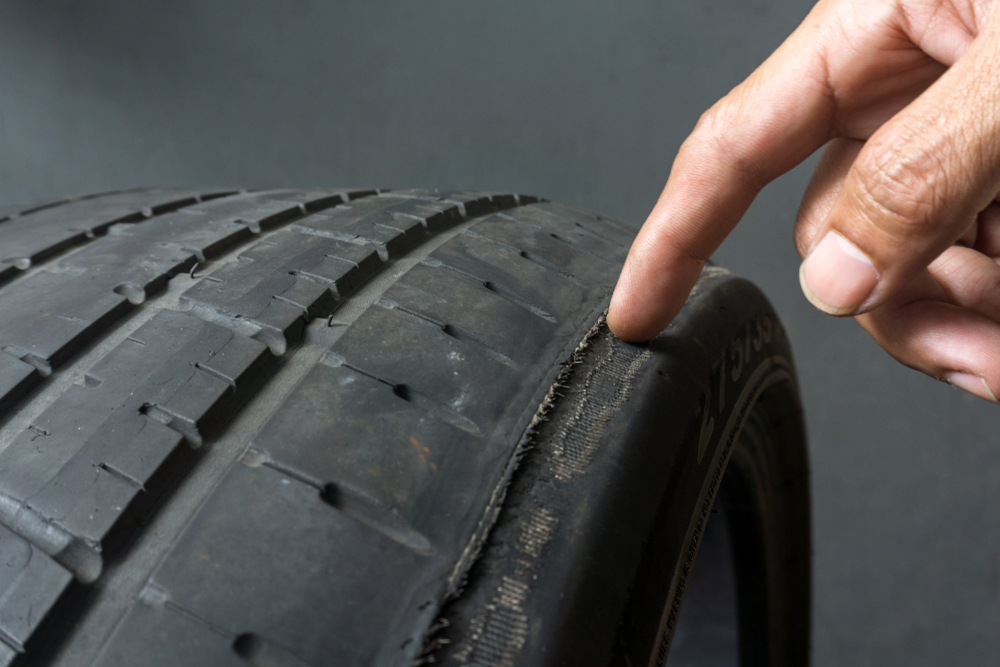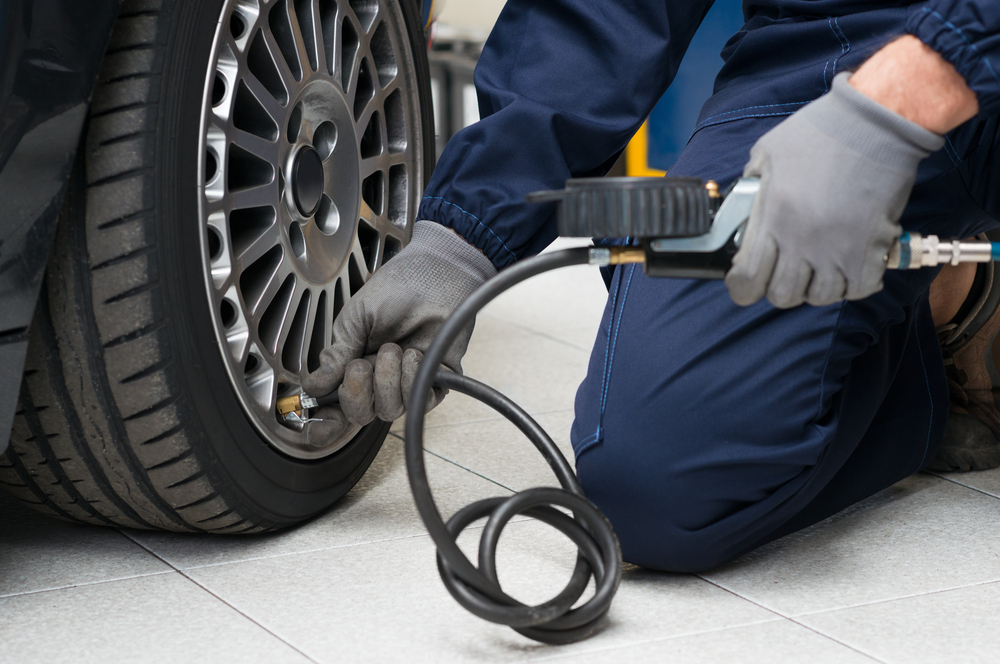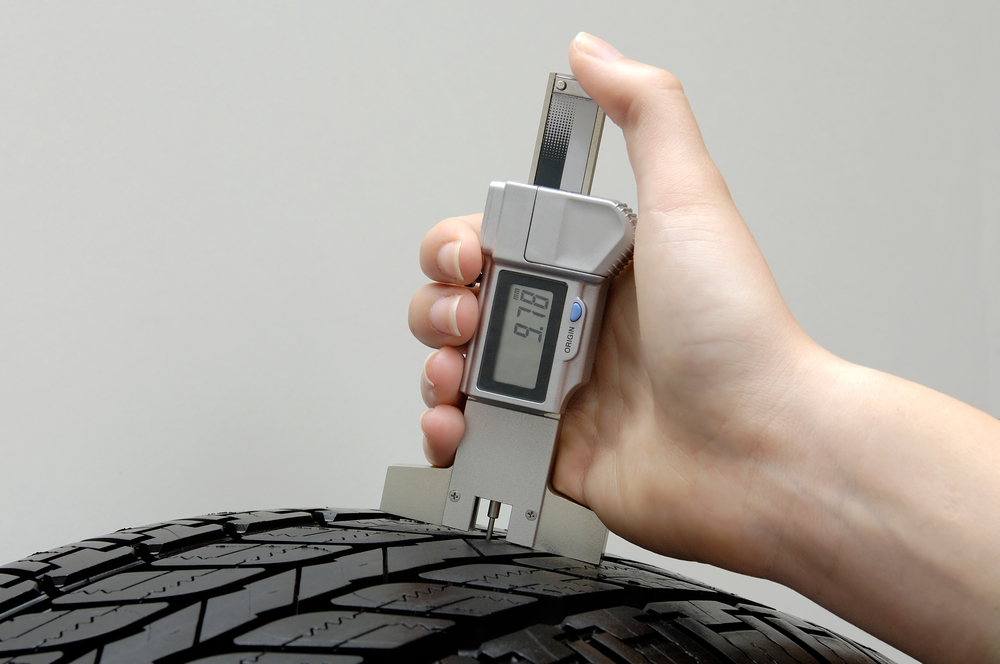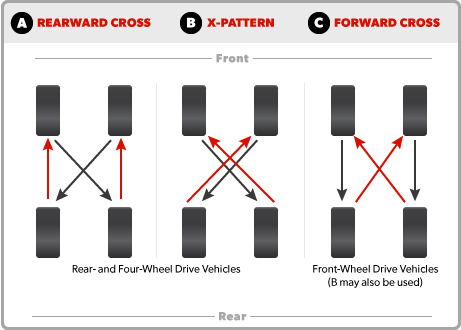
Would you get into your car if you knew your tires would blow during your drive and result in an accident? Probably not. But neither would the 11,000 people who get into tire-related accidents every year.
What’s worse is that most of these accidents are preventable with simple tire maintenance tips. These maintenance activities are easy to do and don’t take longer than the occasional hour-long visit to a tire shop. If you keep up with them, you can prevent an accident and keep your tires in good condition for longer.
Tire maintenance is essential for staying safe on the road. With this tire maintenance guide, you can monitor your tires and ensure they’re safe to drive.
Start With Checking Your Tire Pressure
Air pressure is one of the first things car owners learn to check. Not having the right amount of air in your tires can cause problems ranging from reduced gas mileage to diminished stability on the road.
Maintaining proper tire pressure can improve your gas mileage by 0.6% on average. Underinflated tires are a result of low air pressure and are dangerous. Similarly, an overinflated tire is equally hazardous and even more unpredictable.
Every vehicle comes with tire pressure labeling, which you can find in the vehicle owner’s manual. You can also locate this information on the info chart on the driver-side door frame.
You should keep your tires inflated at the recommended PSI (pounds per square inch). The recommended air pressure relates to the cold air pressure. This is the air pressure when your tires are “cold,” which simply means you haven’t driven them recently.
If you drive your car, the friction between your tires and the road will generate heat. Since hot air expands, your air pressure reading won’t be as accurate if you inflate your tires after driving. Therefore, experts recommend you inflate your tires before moving to get the most accurate PSI reading.
Adjusting Air Pressure
There are three easy steps you should take to check your tire pressure and adjust it.
Step 1: Remove the tire valve and use an air pressure gauge to check the PSI. Please make sure the gauge is fully closed before using it for the most accurate read.
Step 2: Once you’ve determined the air pressure, you will do one of two things. For low air pressure, add air. For high air pressure, use the knob on the back of the air pressure gauge to release air from the tire.
Step 3: Whether you released or added air, this step is the same. You need to check your tire pressure before closing the air valve. You must get the correct air pressure to ensure tire safety and longevity.
Tire Pressure Monitoring Systems
There are a few tools that are handy when checking air pressure.
First off, use a tire pressure gauge, which is an inexpensive tool that gives you instant readings. However, a tire gauge’s simple construction can sometimes give inaccurate readings after a few months of regular use. Some may be inaccurate from the start.
The best way to ensure you’re getting an accurate reading is to check your tires with two to three gauges. If the readings are all within one or two PSI, you have accurate readings. If any readings are different by three or more PSI, you need to replace your gauges.
Since tire gauges are relatively cheap and are found in gas stations and auto parts stores everywhere, you can easily replace a broken gauge.

A tire pump, also known as an air pump or air compressor, is another great accessory. Although you can easily find these at most service stations, you should consider investing in portable tire pumps and storing them in your trunk.
Any store that sells vehicle accessories will more than likely have a few tire pumps available. Portable air compressors are highly effective because you’ll never be stranded if you end up with a flat tire. The air compressor plugs into your car and attaches to the air valve on the tire.
They are simple to use and save you time. Some air compressors come with PSI readings, so you have an all-in-one device to fill your tire and deflate to prevent overinflation.
Newer vehicles equipped with sensors in the wheels can monitor a tire’s air pressure. When a tire’s pressure is low or high, a convenient notification and subsequent warning light appears on the dashboard. Having this auto-detection feature can also be a lifesaver while out on the road. With an automatic warning, you know when it’s time to look for an auto shop or gas station to check your pressure before it’s too late.
It is in your best interest to address the issue as soon as you can to prevent damage. For example, if you have an air leak in your tire from a minor tear or puncture, your warning light will go on. If you get to a tire shop right away, a mechanic can repair the leak or replace your tire before you end up with a flat.
Although this feature is a great tool, it does not replace frequent checks on your part. Warning lights can go out, and computers get bugs, sometimes flashing false warnings. So not seeing the sensor come on does not mean your tires are perfect.
Tire Tread
Tire tread refers to the grip and pattern you see on tires. Tires have different types of tread to suit varying kinds of weather and performance models.
Regardless of the type of tire on your vehicle, the tread eventually wears out. If your tread is too low, you are at risk of slipping on the road and getting into an accident.
Checking Your Tread
Checking your tread is a vital tire maintenance step. Regardless of tire inflation, low tread is dangerous. Think of tread as the grip a tire has on the road — the more tread, the better the grip and vice-versa. There are a few ways you can routinely check your tire tread.
When a tire gets to or below 2/32”, you need to change your tires. The easiest way to check this is by using the penny test.

For the penny test, take a regular penny and use it to measure the depth of the tread. To properly do this, place Lincoln’s head down into the grooves of the tread. If you are unable to see part of his head, your tread is a reasonable height. If you can see Lincoln’s entire head, your tread is too low.
Another method is to use a measuring stick, tape, or ruler that shows the smallest increments in inches. A ruler or measuring tape gives you an accurate reading. However, depending on your tire and any customizations, it may be challenging to fit a ruler near your tire and get an accurate reading.
Many savvy car owners use a tire tread depth gauge. This gauge is a small tool that gives you an accurate reading of the tread depth. It’s easy to use and reliable — and small enough to fit in your vehicle’s glove compartment.

Regardless of which tool or method you decide to use, check multiple places around each tire. The more spots you check, the more accurate your reading.
Balance and Alignment
An often overlooked component of tire maintenance is wheel balance and alignment. Since car owners cannot check balance and alignment themselves, they often put off this maintenance step until they bring their car in to see a mechanic for another reason.
To balance and align your tires, you need to bring your car into a tire shop. This process requires time and commitment, but it’s quite affordable. Wheel alignment usually costs between $100 and $200 for all four tires, while balancing can cost from $10 to $15 per tire.
Balance
If you feel vibrations and shaking while driving, your wheels may be unbalanced. This vibration happens because of uneven wear on your tires or rims. Therefore, the tires are bouncing on the road.
You need to bring your vehicle to a tire shop and request a tire balance to fix this issue. During the process, the mechanic will check the tread of your tires.
Wheel balancing is often confused with tire rotation. However, rotating your tires does not fix this problem. Rotating them would only move the issue to a new part of your vehicle. To properly balance your wheels, the mechanic goes through a series of steps.
Step 1: They will remove the wheel from the vehicle.
Step 2: Next, the mechanic will use a balancing machine to find the imbalances in the tire. This machine spins at a very high rate to accurately determine the location of the imbalance.
Step 3: The mechanic will then put on wheel weights. Wheel weights are small metal weights that help with balancing your tires. You will save money on gas and tire replacement because these weights prolong the life of your tire.
Step 4: Finally, they will reinstall the tire and check the tire pressure.
Experts recommend bringing your car in for wheel balancing every 15,000 miles, which is once every two recommended tire rotations. Some argue that rotation and balancing should happen simultaneously, which means you would get your tires balanced every 5,000 to 7,500 miles.
Ultimately it is your decision and based on how much you drive. Regardless, wheel balancing is necessary to stay safe on the road.
Alignment
If you’ve ever experienced a pulling sensation while driving, your wheels were probably misaligned. In other words, your tires were not moving in a straight line. Misaligned wheels can occur for several reasons.
Uneven tread wear can misalign your tires. If you drive over a pothole or accidentally hit a curb, your alignment can skew.
It is not safe to drive with misaligned tires. The moment you find your vehicle pulling when you should be going straight is the moment you need to visit a tire dealer.
Tire alignment is not a one-size-fits-all procedure. Every vehicle has specific alignment standards outlined in the owner’s manual. Your tire mechanic will go through a series of steps to align your tires properly.
Step 1: The mechanic will drive the vehicle to determine where the issues lie and the kind of problems you are experiencing.
Step 2: They will then drive the vehicle into the alignment rack and lock it in place. Once in the alignment rack, he will raise the car overhead to look at different mechanical components.
Step 3: Your mechanic will consult the owner’s manual for the OEM standards required for the vehicle. Once the mechanic has properly inflated the tires, he will begin making the necessary adjustments.
It is hazardous to drive with misaligned wheels. Not only is the tire experiencing unnecessary wear, but you can also end up damaging other parts of your vehicle, such as the suspension. And if you’re not able to steer your vehicle properly because of misalignment, you could be in trouble when driving at high speeds.
Tire Rotation
Tire rotation refers to the process of moving your tires to a new well to prevent uneven tire wear. Tires experience different types of wear and tear at various locations in the car. Therefore, rotation helps prevent overuse.
Tire experts recommend rotations every 5,000 – 7,000 miles, but your owner’s manual gives you a specific range for your particular vehicle.
Depending on where you buy your tires, free tire rotations may be part of the package. Make sure you ask the sales rep about this option. When you bring your vehicle in for a tire rotation, the process should go quickly.
This procedure is simple, which is why it is often provided as a free perk when you purchase tires. When the mechanic brings your vehicle into the shop, he will go through a series of steps to rotate your tires.
Step 1: The mechanic hoists your vehicle up using a jack and begins removing one wheel at a time.
Step 2: They will then move the wheel to its new location based on their preferred method. There are different ways to rotate tires: rearward cross, x-pattern, and forward cross.

Step 3: The mechanic reinstalls the wheels in their new wells.
The process is quick and easy. Even if your vehicle has more than four tires, you still need to rotate them. When you regularly rotate your tires, you prolong their life and increase safety while out on the road.
Conclusion
It’s so important to pay attention to your tires. They are the only part of the car that is always touching the road. If there is anything remotely off, you could end up dealing with problems. Some are minor, such as less gas mileage and a shorter tire lifespan. Others, like damage and the risk of an accident, are very serious.
Routinely checking your tires is all about safety. The more often you check your air pressure, tread, balance, alignment, and rotation, the safer you will be on the road. Not only do routine checks keep you and your family safe, but it saves you money in the long run.
Tires are expensive, and anything you can do to prolong the life of your tire will save you money.
When you want to give your tires a break, contact Guardian Auto Transport. Whether you need to ship your car for a move, a trip, or an event, or if you’re selling it to a buyer in a different state, we can safely get it to its destination.





